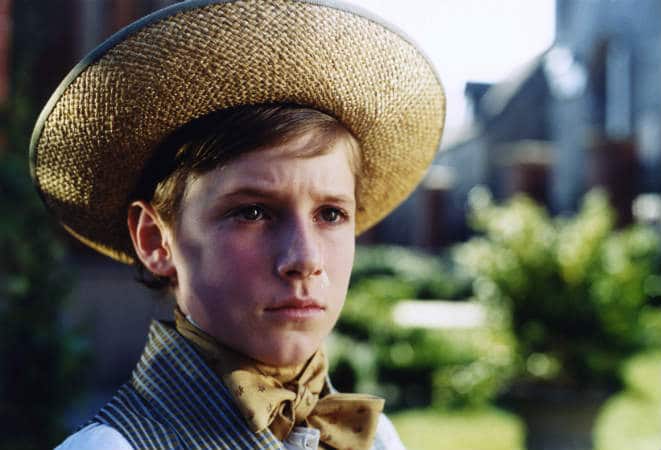
For the final instalment of my Fairy Tales in Classics series, I turn to that all-time favourite, Charles Dickens’ Oliver Twist.
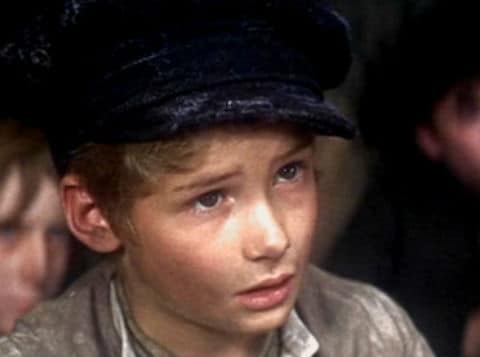
First published in 1837 in serial form, Oliver Twist doesn’t instantly leap out as being a version of one particular fairy tale, but rather as a type of fairy tale. This type or trope is commonly known as Rags-to-Riches, or sometimes Rags-to-Royalty. It encompasses such well-known tales as Cinderella, Aladdin, Jack and the Beanstalk, and even the aspects of the legend of King Arthur. TV Tropes describes this type as having different variations, including:
- Cinderella style: A commoner by birth, or with only minor ties to nobility. Nonetheless, through hard work, perseverance, and the help of some musical animals, she’ll swoop into the ball and make the prince her “husband”. Other classics of this type: Beauty and the Beast, Aladdin and King David
- Snow White Style: Legitimately royalty, but forced into hiding to escape those who plot against her or because she cannot act as she needs to as long as she is seen as royal. Usually, part of a Fish out of Water plot as she tries to hide her royalty and fake being a commoner. May have to prove birthright with bizarre tests or special trinkets only the legitimate Princess would have. Other classics of this type: “The Princess and the Pea,” “Donkey Skin.”
- Sleeping Beauty Style: Like the Snow White, she’s royalty and forced into hiding for protection. Unlike the Snow White, she has no idea she has a Secret Legacy and is actually royalty. Of course, her Genre Blind guardians feel she’s safer not knowing her ancestry or that there are evil forces seeking to harm her, or possibly they don’t know either. You can guess how that ends. (Note: Named after the Disney version of the story only.) The classic Gender Flip version is, of course, King Arthur. It also features in such fairy tales as The Dancing Water, the Singing Apple, and the Speaking Bird
- King Thrushbeard Style: A spoiled royal daughter who loses her inheritance due to her own actions and is forced to live in poverty. Fortuitously, when she comes to realize the value of what she lost, it is restored to her. Often as part of her humiliation, she marries a commoner, who turns out to be a King Incognito whom she had previously scorned.
- The Goose Girl Style: Those who plotted against the princess succeed, and she is forced into a menial position or enslaved until her story comes out. Usually, the princess knows who she is, but isn’t able to tell the truth, and she may be ignorant. A Gender Flip classic of this type, the Child Ballad “The Lord of Lorn and the False Steward;” it also appears with Ozma
- A common technique is to combine this with Cinderella. The heroine wins the prince, perhaps even marries him and has his child; then her enemies triumph over her, and she must flee until she is restored. Bride and Switch is also common, just before the wedding. Such a combination occurs in The Wonderful Birch and The Maiden Without Hands.
Source: http://tvtropes.org/pmwiki/pmwiki.php/Main/RagsToRoyalty
If we look at this list of variations, we can see that Oliver Twist fits most closely with the Sleeping Beauty Style. (The Briar Rose version that we see in the Brothers Grimm.) Oliver grows up an orphan, poor and mistreated, with no idea of his true, middle-class heritage. (OK, this is not as exciting as it would be had he turned out to be a long-lost brother of Queen Victoria, but you’ve got to draw the line somewhere!) In true fairy tale style, he turns out to be related to the very family that has sheltered him (at the houses of Mr Brownlow and Rose.) In equally true fairy tale style, one member of that family (Monks) tries to do away with Oliver but is foiled in his plans.
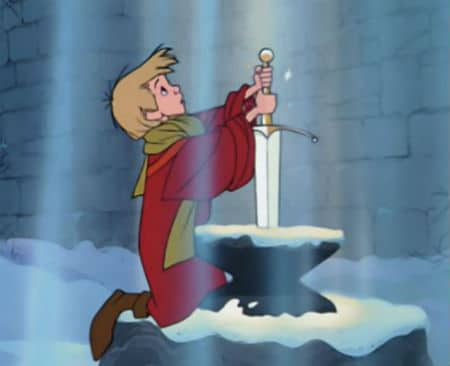
We have already mentioned King Arthur in connection with this trope. In the famous “Sword in the Stone” episode (made famous by Mallory and TH White) it is only when the young Arthur pulls the sword from the stone that he (and everyone else) realises that he is Uther Pendragon’s heir and not Sir Ector’s son at all. As Mallory has Sir Ector say, “I wote well ye are of an hyer blood than I wende ye were.” (1) In Oliver Twist, the magic objects are not a sword and anvil, but a locket and ring belonging to Oliver’s mother, which could prove his identity.
RELATED Fairy Tales in Classics – Wuthering Heights
Elsewhere in Mallory’s huge Arthurian saga, we find the story of Sir Gareth of Orkney, who comes to Camelot anonymously, as Sir Beaumains. He is mistreated by Sir Kay and made to work in the kitchen, but Sir Launcelot protects and mentors him, seeing a glimpse of his true nature beneath the humble exterior. Here we can see a reflection of the differing ways Oliver is treated – by Mr Brownlow, Rose and friends, and by virtually everyone else in the book.
The classic Norse fairy tale collection, East of the Sun and West of the Moon (1920), contains more stories that share elements with Oliver Twist. In “The Blue Belt,” the son of a beggar woman (along with his mother) takes refuge in a house that turns out to be the home of a Troll. The Troll and the boy’s own mother then make plans to do away with him. This harsh treatment is reflected in Oliver’s experience: firstly, when homes with a supposed duty of care towards him (the baby-farm, the workhouse, the undertaker’s) do little more than punish and neglect him; and secondly when his escape to supposed freedom results in his being sheltered by Fagin and his criminal colleagues, and groomed for a life of crime.
A similar thing happens to the hero of “The Widow’s Son” in the same collection. This unfortunate, hungry boy is taken in by a man who also turns out to be a troll and repeatedly punishes the boy with beatings for looking into his secret rooms. We are reminded of the scene in which Oliver inadvertently sees Fagin counting his jewels. Fagin immediately leaps up and threatens Oliver with a knife: “What do you watch me for? Why are you awake? What have you seen? Speak out, boy! – Quick – quick! for your life!” (2) Luckily, Oliver is cannier than his fairy tale counterpart and escapes punishment by denying having seen anything. He is, however, beaten by Fagin with a “jagged and knotted club” (3) at a later date, for trying to escape. The ugliness and violence of Fagin and Bill Sikes are such that they could easily be considered trolls in human form. However, Dickens’s point in writing the novel is that Oliver’s persecutors (both criminal and respectable) are humans, who ought to have more humanity.

The hero of “The Widow’s Son” later escapes the troll’s clutches with the aid of a talking horse, and goes to work as a gardener in the king’s palace. He covers himself with a wig of fir-moss, which makes him, “so ugly, and pale, and miserable to look at, no one would have known him again.” (4) Oliver does not willingly disguise himself, but we are repeatedly told how pale and thin he looks. For much of the book, he suffers not only from malnutrition but also from other ailments caused by the damp, cold and unsanitary environments in which is he forced to live. However, we are also told about his “delicate and handsome” (5) features, so very similar to those of his late mother. It is probably Oliver’s neglected appearance that disguises his true identity. One wonders what Dickens is trying to say through this. A cynic might suggest the message is that Oliver only turns out well and resists a life of crime because he is middle-class after all. But the message could just as easily be that behind the dirty façade of every street urchin is a potential good citizen, just waiting to be nurtured. That would certainly be the attitude of the charitable, both in Dickens’s day and in our own.
The Widow’s Son in the fairy tale soon makes friends with the Princess, who is the only one to whom he reveals his true appearance. But his happiness does not last long. He is locked in a tower by the King for sleeping in the Princess’s bedroom. Similarly, Oliver’s initial happiness at the house of Mr Brownlow soon comes to an end when the criminal gang recapture him. Fagin puts Oliver in solitary confinement for a week and more, both as punishment and to make him feel that any company (even that of thieves) is better than none. Monks also enter the scene, as the one person in Oliver’s new world who is against him. Here, it is not a girl that he doesn’t want Oliver to get his hands on, but rather his inheritance. However, it through meeting a lovely girl – Rose – that Oliver comes a step nearer to gaining his rightful place in the world.
The Widow’s Son escapes his prison to fight in the King’s wars, thereby vindicating himself. He marries the Princess and becomes the next king. An additional transformation occurs when the boy’s faithful horse instructs the lad to cut off his head. In the horse’s place stands a lovely Prince, the rightful ruler of the neighbouring land, who was turned into a horse by the Troll. The two kings remain lifelong friends and their countries remain at peace.
Oliver is too young to get married, but he does come into his rightful inheritance. If he has a princess, it is Rose, who turns out to be his aunt, although Oliver sees her as a “sister, my own dear sister.” (6) It is she who is enabled to wed her true love Harry Maylie as a result of the family revelations. We could perhaps see Harry as Oliver’s brother-king at the end of this Dickensian fairy tale, in which the wicked are punished and the good rewarded. As for young Oliver, he most definitely lives happily ever after.
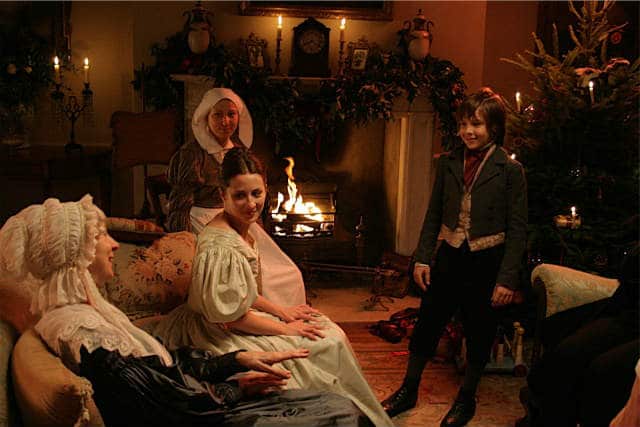
References:
(1) Thomas Mallory, Works e. Eugene Vinaver (Oxford: OUP, 1971) p.9
(2) Charles Dickens, Oliver Twist, Wordsworth Editions Ltd. (Herts: 1992) p.53
(3) Ibid. p.100
(4) East of the Sun and West of the Moon (New York: Calla Editions, 2008)
(5) Oliver Twist p.83
(6) Ibid. p.341
ARE YOU A ROMANCE FAN? FOLLOW THE SILVER PETTICOAT REVIEW:
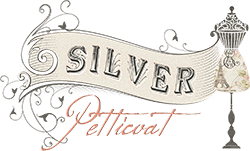 Our romance-themed entertainment site is on a mission to help you find the best period dramas, romance movies, TV shows, and books. Other topics include Jane Austen, Classic Hollywood, TV Couples, Fairy Tales, Romantic Living, Romanticism, and more. We’re damsels not in distress fighting for the all-new optimistic Romantic Revolution. Join us and subscribe. For more information, see our About, Old-Fashioned Romance 101, Modern Romanticism 101, and Romantic Living 101.
Our romance-themed entertainment site is on a mission to help you find the best period dramas, romance movies, TV shows, and books. Other topics include Jane Austen, Classic Hollywood, TV Couples, Fairy Tales, Romantic Living, Romanticism, and more. We’re damsels not in distress fighting for the all-new optimistic Romantic Revolution. Join us and subscribe. For more information, see our About, Old-Fashioned Romance 101, Modern Romanticism 101, and Romantic Living 101.
